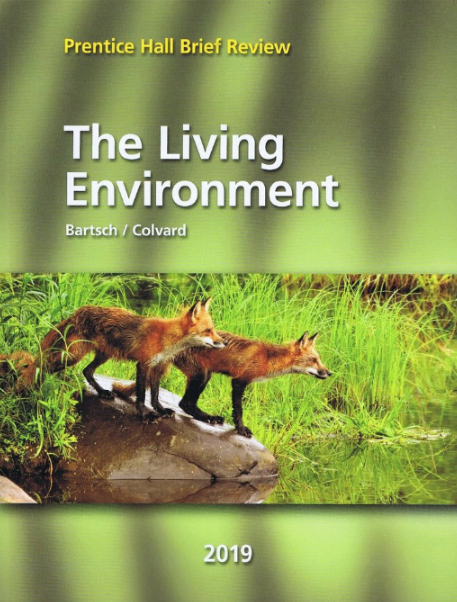Home Page
Textbooks
Prentice Hall Brief Review: The Living Environment 2019
Section 8.1: What Is Science?

Prentice Hall Brief Review: The Living Environment 2019
John Bartsch, Mary P Colvard
ISBN: 9781418292164
Textbook solutions
Chapter 1: Similarities and Differences Among Living Organisms
Section 1.1: The Characteristics of Life
Section 1.2: Cells: The Basic Structure of Life
Section 1.3: The Cell Membrane
Section 1.4: Multicellular Organisms
Page 15: Practice Questions
Chapter 2: Homeostasis in Organisms
Section 2.1: Basic Biochemical Processes of Living Organisms
Section 2.2: Feedback and Homeostasis
Section 2.3: Disease as a Failure of Homeostasis
Page 38: Practice Questions
Chapter 3: Genetic Continuity
Section 3.1: Heredity and Genes
Section 3.2: Genetic Code
Section 3.3: Genetic Engineering
Page 55: Practice Questions
Chapter 4: Reproduction and Development
Section 4.1: Types of Reproduction
Section 4.2: Cell Division
Section 4.4: Applications of Reproductive Technology
Page 74: Practice Questions
Chapter 5: Evolution
Section 5.1: The Theory of Evolution
Section 5.2: The Mechanics of Evolution
Section 5.3: Patterns of Change
Page 93: Practice Questions
Chapter 6: Ecology
Section 6.1: Organisms and Their Environment
Section 6.2: Population Interactions
Section 6.3: Energy Flow Through an Ecosystem
Section 6.4: Diversity Benefits Species and Habitats
Section 6.5: Environmental Changes
Page 116: Practice Questions
Chapter 7: Human Impact on Ecosystems
Section 7.1: Need for Awareness and Understanding
Section 7.3: Human Activities and the Loss of Diversity
Section 7.4: The Impact of Technology and Industrialization
Page 138: Practice Questions
Chapter 8: Scientific Inquiry and Skills
Section 8.1: What Is Science?
Section 8.2: Scientific Inquiry
Section 8.3: Further Science Understandings
Page 160: Practice Questions
Chapter 9: Laboratory Skills
Section 9.1: Tools for Measurement
Section 9.3: Additional Laboratory Technique
Section 9.4: Observing Plant and Animal Specimens
Section 9.5: Laboratory Safety
Page 183: Practice Questions
All Solutions
Section 8.1: What Is Science?
Exercise 1
Step 1
1 of 2
The answer is 4. Forming a new hypothesis to know what makes strain A resistant to temperature could further the knowledge about resistant strains of microorganisms and may help in the advancement of technology or disease.
Result
2 of 2
4
Exercise 2
Step 1
1 of 2
The answer is 4. As seen in the graph, a high temperature would most likely speed up reproduction and a low temperature would slow the progress of growth.
Result
2 of 2
4
Exercise 3
Step 1
1 of 2
The missing procedure would be analyzing data and forming a conclusion. Analyzing data and making a conclusion are the last steps of a research. This is where you state if your hypothesis is correct and make a conclusion about the experiment.
Result
2 of 2
analyzing data and forming a conclusion
Exercise 4
Step 1
1 of 2
The answer is 2. Hypotheses are commonly used in scientific research wherein a certain belief or idea is formed to give a researcher further reason to study or dig up information as well as do further testing about that theory.
Result
2 of 2
2
Exercise 5
Step 1
1 of 2
The answer is 4. The first step is to define a problem followed by formulating a hypothesis, performing the experiment and lastly, analyzing the data.
Result
2 of 2
4
Haven't found what you were looking for?
Search for samples, answers to your questions and flashcards

unlock
